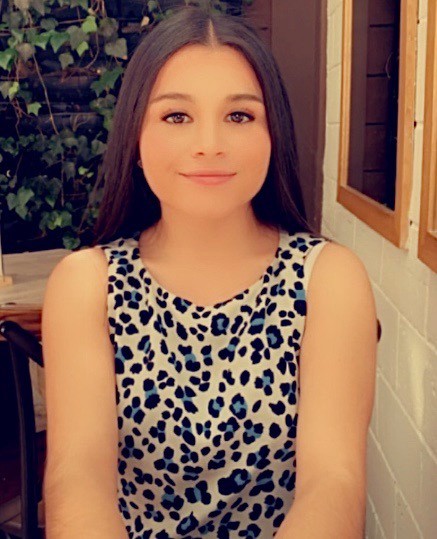Educators who participated in a recent six-week online workshop series about the Great Lakes and inland waters, “Trimming our Sails” were especially wowed by one presentation. “Plastic Debris Identification” was offered by Daniela Leon, an undergraduate student at the University of Wisconsin-Superior who is majoring in biology and minoring in chemistry.

Daniela Leon, submitted image.
Leon described a method to identify the common types of plastic, many of which make their way into lakes and break down into smaller pieces to form microplastic pollution. The method can be used in classrooms or at home and is especially geared toward high school students.
According to Ginny Carlton, Wisconsin Sea Grant’s education outreach specialist, one reason it’s important to know about the various types of plastics is because some float and others sink. “The differences in buoyancy means that a particular type of plastic will be found within a different vertical location of the water column. Where it is found influences the impacts it can have. For example, if it floats, then organisms that are surface feeders may be impacted,” Carlton said.
Identification of plastic types is also useful because it gives clues to the sources of the pollution – whether the plastic came from a fast-food container or from plumbing materials, for instance.
“Another reason . . . is that different chemical compounds can attach to different types of plastic,” said Carlton. These other chemicals basically attach to the plastic and ‘catch a ride’ through the water column or float across the water surface. The plastic acts like a magnet to gather up and concentrate various chemical compounds. Previous research has shown some of these chemicals are hazardous to human health.”
Leon’s activity uses simple materials like isopropyl alcohol, acetone, corn oil and plastic pellets. First come the tests to see how buoyant the plastic is. Students drop the plastic into water, then isopropyl alcohol, then the oil. Six types of plastic are commonly used in the plastic industry and each have different densities and abilities to float.
The next test is solubility or how long it takes the plastic to dissolve. That’s what the acetone is for. Students place the plastic into the acetone and record the length of time until it dissolves. As with the float test, the different types of plastic have varying solubility.
At the end of Leon’s presentation, the workshop teachers met in small groups. The high school teachers were enthused, saying they thought this exercise could be done by students even in virtual environments with supplies they have on hand at home.
Leon is mentored by professor Lorena Rios Mendoza at UWS. Mendoza was the main presenter for this part of the workshop and was also joined by another mentee, professor Tania Pelamotti. The workshop was organized by the Center for Great Lakes Literary (CGLL) and hosted by the Wisconsin and Minnesota Sea Grant programs.
The first four videos of the workshop series are now available on the CGLL YouTube page, including Leon’s session, which is contained in Workshop 4.
For more information about the toxicological effects of plastic, visit this webpage by the U.S. Environmental Protection Agency.


